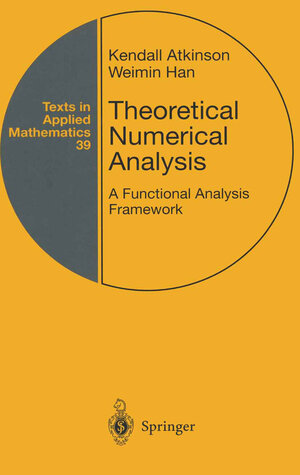
From the reviews:
MATHEMATICAL REVIEWS
„The book starts with two chapters that introduce the reader to functional analysis. In these 89 pages the functional-analytic framework for dealing with theoretical numerical analysis problems is developed from scratch, starting with the definition of a linear space. The authors achieve this remarkable feat by avoiding a formalized framework Lebesgue measure, integration, and distribution theory. Instead they use more standard results on the completion of normal spaces and the unique extension of densely defined bounded linear operators. This is a very interesting approach. Actually these two chapters might form the basis for a functional analysis course in its own right. The rest of the book covers a wealth of topics and might serve as the basis for several graduate courses…The book is well written and accessible to students who have had the usual mathematics undergraduate courses in analysis, linear algebra and numerical analysis. It can be recommended as a textbook for several graduate mathematical courses and also as a reference work for numerical analysts who are interested in the general mathematical aspects of their work.“
K. l. Atkinson and W. Han
Theoretical Numerical Analysis A Functional Analysis Framework
„The book is well written and accessible to students who have had the usual mathematics undergraduate courses in analysis, linear algebra and numerical analysis. It can be recommended as a textbook for several graduate mathematical courses and as a reference work for numerical analysts interested in the general mathematical aspects of their work.“ —AMERICAN MATHEMATICAL SOCIETY
From the reviews of the second edition:
„This is the second, expanded edition of the book published originally in 2001. … The book can be recommended as an introduction to the so-called theoretical numerical analysis … . The text presupposes onlythe basic undergraduate knowledge of linear algebra, analysis and numerical methods and is thus suitable as a basis for advanced undergraduate and beginning graduate courses. All sections end with exercises, and at the end of each chapter the reader will find useful suggestions for further reading.“ (Aleksandar Perovic, Zentralblatt MATH, Vol. 1068, 2005)



